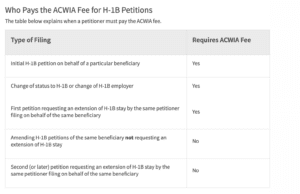EB-5 Program Treated Ever So Gently by GAO
Generally, the reports of the U.S. Government Accountability Office (GAO) are filled with endless numbers and specific suggestions for program reform, if need be.
These statements, however, do not apply its latest report on the scandal-ridden EB-5 (immigrant investor) program. This is the program that provides a family-sized set of green cards to aliens who put $800,000 into investments in the U.S. economy, usually managed by others. Congress recently put most of the program on hold for more than nine months until it could come up with a reform package.
There have been many scandals as U.S. citizens, usually of the same ancestry as the investors, have stolen the funds of the would-be investors.
GAO, to its credit, in its one-page summary of the document, states:
USCIS does not collect data on the reasons for (1) denying EB-5 petitions and applications and (2) terminating Regional Centers. Developing a process to collect and assess these reasons would provide USCIS with valuable insight into program risks.
In other words, if you do not know why some of your decisions fail, you are likely to keep making the same mistakes.
Good advice, but the GAO is all too timid when it comes to analyzing the activities of USCIS in regard to EB-5; it apparently has lots of data but refuses to use it, on the grounds of “sensitivity”, as it says in one of its many footnotes, No. 99.
Let’s look at the blandest of numbers, the number of the middleman regional centers per state. On p. 31 of the report, we see “Figure 6: Number of U.S. Citizenship and Immigration Services Regional Centers Approved to Operate by State and Territory, as of June 30, 2021”:
It shows no such thing — it has a number-free, state-by-state map of the U.S. with the states showing white for those without regional centers and in varying shades of grey for those with these centers, up to black for the two states (New York and California) for those with the most such centers, one of which has 159. Three jurisdictions without such centers are at the far corners of the map: Alaska, American Samoa, and Maine. South Dakota, which had a disastrous run-in with the program, is also regional-center-free.
If GAO won’t tell us the number of regional centers by state, which can be sussed out from other USCIS data, it certainly will not say much of anything about the incidence of fraud in the program, but it clearly has the data to do so.
On p. 35 we see this somewhat puzzling table:
 |
What we see is that in what is presumably some subset of EB-5 cases, the possibility of fraud was detected. In these cases, some 29 percent to 68 percent of them were declared fraudulent later, and that fraud was present in over two-thirds of this subset in the years 2020 and 2021. What do those figures mean?
What they really mean depends on how many cases were initially chosen by USCIS’s Fraud Detection and National Security Directorate (FDNS) as worthy of further consideration as having fraud possibilities. Did FDNS identify 5 percent of the total volume in this way, or as much as 50 percent? Clearly 68 percent of 5 percent suggests a situation under control, while 68 percent of 50 percent indicates a massive failure — and GAO won’t tell us which is which.
There is yet another, smaller problem here. GAO is only looking at cases that FDNS thinks are likely to involve fraud. What about the actual incidence of fraud in the cases that FDNS thinks are fraud-free? Were there not some — or many — such cases? GAO is, again, silent.
USCIS paused its number-reluctance long enough to share country-of-origin application denial rates, which (in Table 3, p. 23) show that South Koreans with a denial rate of 5.8 percent submitted the best proposals and Russians (30.9 percent) and Iranians (47.2 percent) the worst.
One would hope that the next time GAO approaches this subject, or the DHS inspector general does, that it would give us the true picture of the agency, and of this program. The American public is owed such a report.






